
Steam, Glorious Steam!

I've had a good few discussions lately about domestic oven steaming, notably with DanAyo and Doc.Dough.
I've tried various in-oven solutions over the last year or two with good, but not great results. It was also getting to the point where it was taking longer to set the oven up than it was to do the actual baking!
I became convinced that the best way forward was to generate steam externally and introduce it into the oven. This blog post gives some details of the practicalities of how I achieved this.
I decided that the simplest steam generator was going to be a pressure cooker, but there are other options, eg a steam wallpaper stripper!
So, as luck would have it, I found a nice compact stainless pressure cooker preowned at a good price. Originally sold by Lidl, I believe. I drilled a hole in the lid with a hole saw and fitted a 1/4 bsp ball valve, sealed in with a ptfe washer. I added a 1/2 bsp hose fitting and this end of things was ready to go.
For the oven, the only way in was from the side and through the adjacent kitchen cabinet - fortunately it's all hidden away! So I drilled a hole in the oven wall with the same hole saw and fitted a threaded 1/4 bulkhead fitting with ptfe washer. I needed a bigger hole in the oven cladding to get access from the outside.
Then a bit of thinwall stainless tubing, plus some more fittings and a bit of silver soldering got the oven end of things finished. I fitted some silicone tubing round the stainless pipe, held in place with Kapton tape, to ensure the wood doesn't get burnt.
The pipe from the pressure cooker to the oven is an old shower hose - the good ones are silicone tubing with a chrome plated brass outer, so just the job.
So, all done and ready to go! The trial run in a cold oven was promising, except the oven started to go rusty!
I used the steamer for the first time this morning and am well pleased with the results so far. I got the pressure cooker up to pressure - about 10psi, I think. Then put the loaves in, opened the steam up full, burner up full. The pressure soon dropped to zero, but i think the initial surge is useful.
I steamed for 10 mins and then knocked it off and briefly vented the oven.
Early days, but I'm pleased with the look of the loaves. There's more work to do as the crust is slightly tough and not as crisp as I hoped - perhaps I need to reduce the steam time a bit? One interesting thing I noticed is that weight loss of the loaves was reduced.
Any way, here's a few photos of the build:
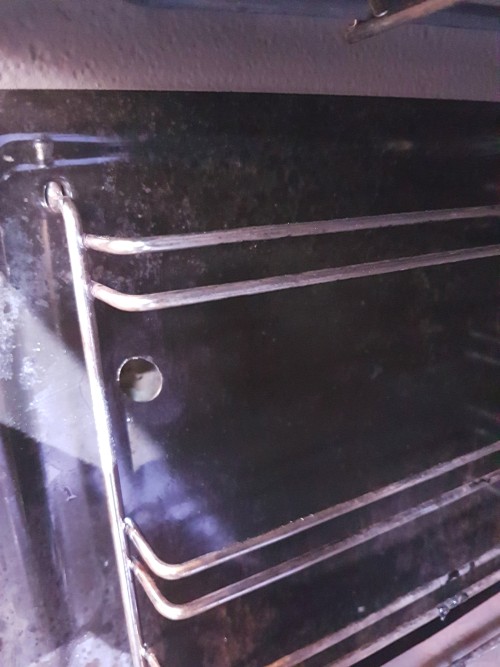
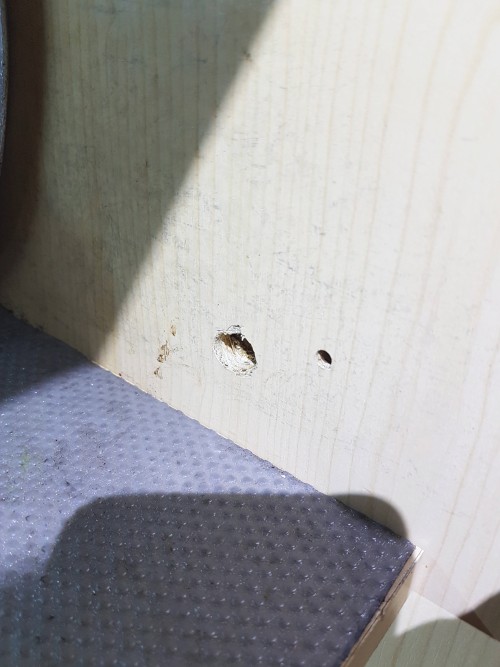
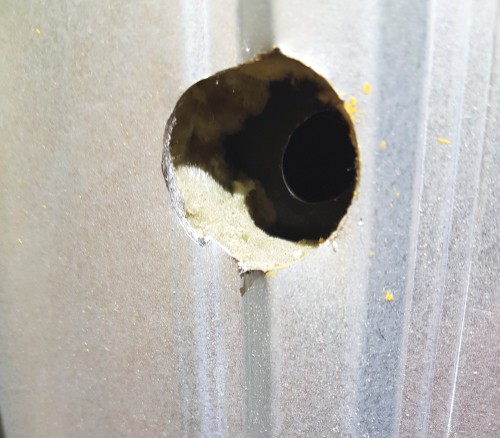
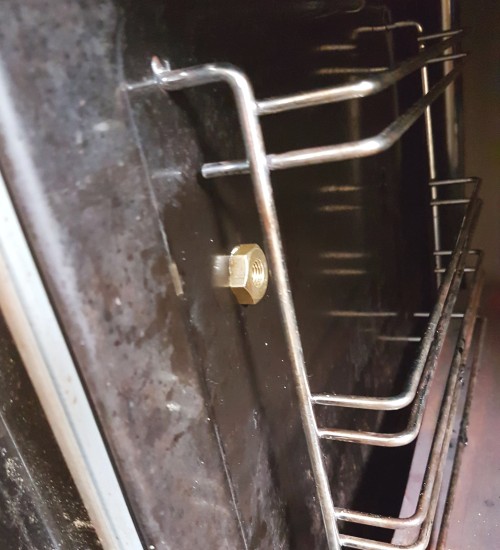
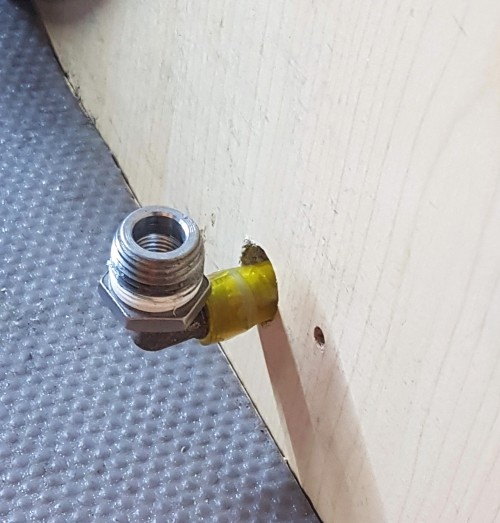
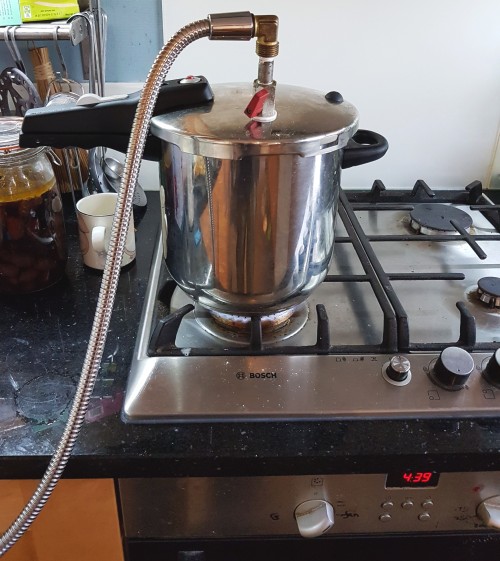
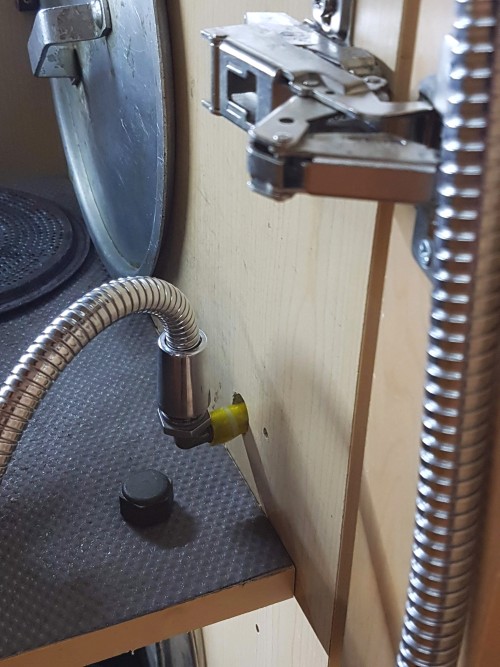
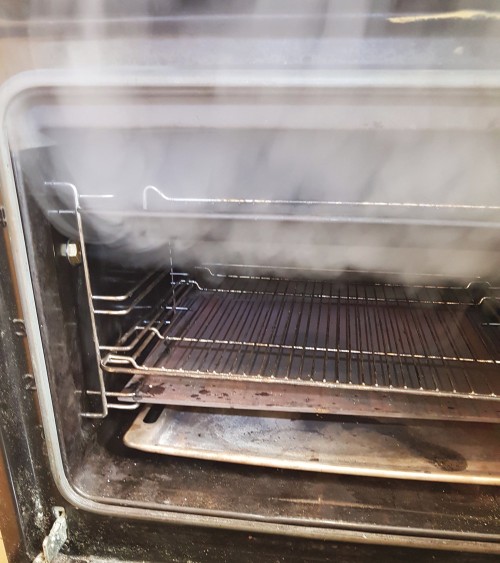
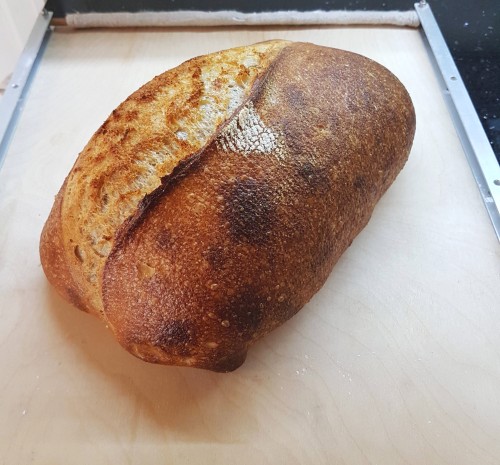
Lance


Comments
It's a shame the gyrations that you had to go through to get sufficient steam in a gas oven box. We with electric ovens should count our lucky stars.
Here is what my oven vent looks like for the entire time that my lava rock pan and one Sylvia steaming towel are at work. This goes on for 12 or so minutes with no let up.
It is electric, Alan - it's just the hob that's gas. Quite a common combination in the UK.
I know someone with a cottage bakery service who does this in an outdoor brick oven, and it works great. Did you try lava rocks? Many of us get a lot of steam from them.
I have considered lava rocks, and decided against them, but I do have other in-oven steaming solutions.
Lava rocks seemed a bit messy and I'm not sure where I would store the tray when not in use. In my oven it wouldn't be feasible to leave them in.
Also the external steam generator is theoretically a better solution, but I accept that many are very happy with the performance of lava rocks and or towels.
Lance
Wow, quite a contraption! Here my low tec option which works pretty well: cast iron skillet (cheap from thrift store), lava rocks (Lowe’s), a metal cup, put a long handle on it. A heat prove glove and an old pot lid to cover the vent hole of the stove.
this my procedure ( sounds a bit awkward but with practice it works well: i prepare before loading the oven: cover vent with lid, fill the medal cup half way with water
, have glove ready. Then I load the oven, close the door, put on glove, grab the long handle, Open the oven door, pull out the skillet just as far to throw in the water, push it back in and close the door. Lots of steam is created.........oven has not yet exploded, I do this since several years. After 15 min I remove the lid from the vent and turn down the temp and finish the bake.
works well! :)
Barbara
How much water do you start with in the PC? And how much is left when you get done? More water in the PC at higher pressure yields more steam as the pressure drops and the water continues to boil as it seeks a new equilibrium of P and T. My guess would be that you don't need all of the steam you can generate, just enough to flush out most of the air at the beginning of the bake, and after that only enough to make up for leaks. So you might be able to get by with just bringing the PC up to pressure and turning off the burner and letting the stored heat continue to supply steam at lower pressure.
Not surprised that you see some corrosion. There is probably a lot more that you can't see since any crack or hole will allow steam out of the box and into the insulation blanket. And after that I don't know where it will go, but it will condense when it finds a place that is cool enough. Also not sure how long it will take to evaporate on its own. I would probably make checking the electrical connections to the heating element a periodic maintenance item.
I used to fill the pressure cooker half full of water and steam for 15 minutes, but I realised that this wasn't necessary; I just steam for 2-3 mins now, though I do briefly pre-steam as well - you just need to saturate the atmosphere in the oven. Then I keep the steam in for another 12 mins before venting.
It all depends on how well sealed your oven is. I have a gadget that blocks off the oven vent for the steaming phase and I open it once steaming is finished.
Also I think the more loaves there are in the oven, the less external steam you need as the loaves themselves will be creating moisture as they heat up, but practically you won't get too many in a domestic oven; 2 is max for me.
Lance
I can't come up with a good reason to pre-steam other than to bleed off some pressure and make sure that there is steam to be had. It seems to me (and I am totally willing to learn something here) that the pre-steaming cools off the oven at least a little bit, and the steam escapes when you load, so it does not appear at first look like there is a benefit. In a commercial bakery where there is probably better steam retention, I have always seen the baker close the oven door and then open the steam valve for a relatively short period of time then shut it and walk away. When we do a community bake in the local wood-fired oven, we pump up the sprayer, load the oven, close the door, then poke the spray wand in through a hole in the door and pull the trigger for 15 seconds (then plug the spray port). The bread does supply a lot of moisture (probably in proportion to the surface area of the bread being baked) and we get great results by being consistent.
I think I read that presteaming is sometimes done commercially. Since I've got the facility, I see no harm in using it, and maybe it does some good. Only for a few seconds - not enough to substantially lower oven temperature.
Lance